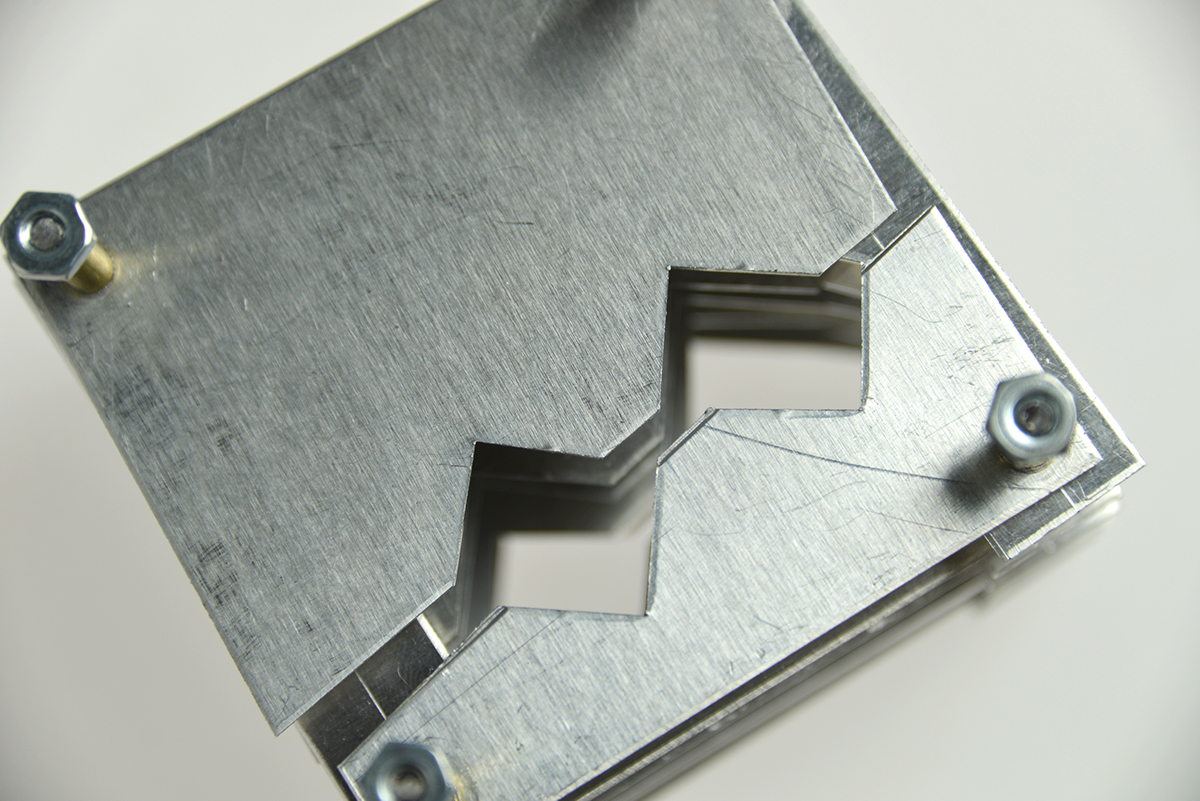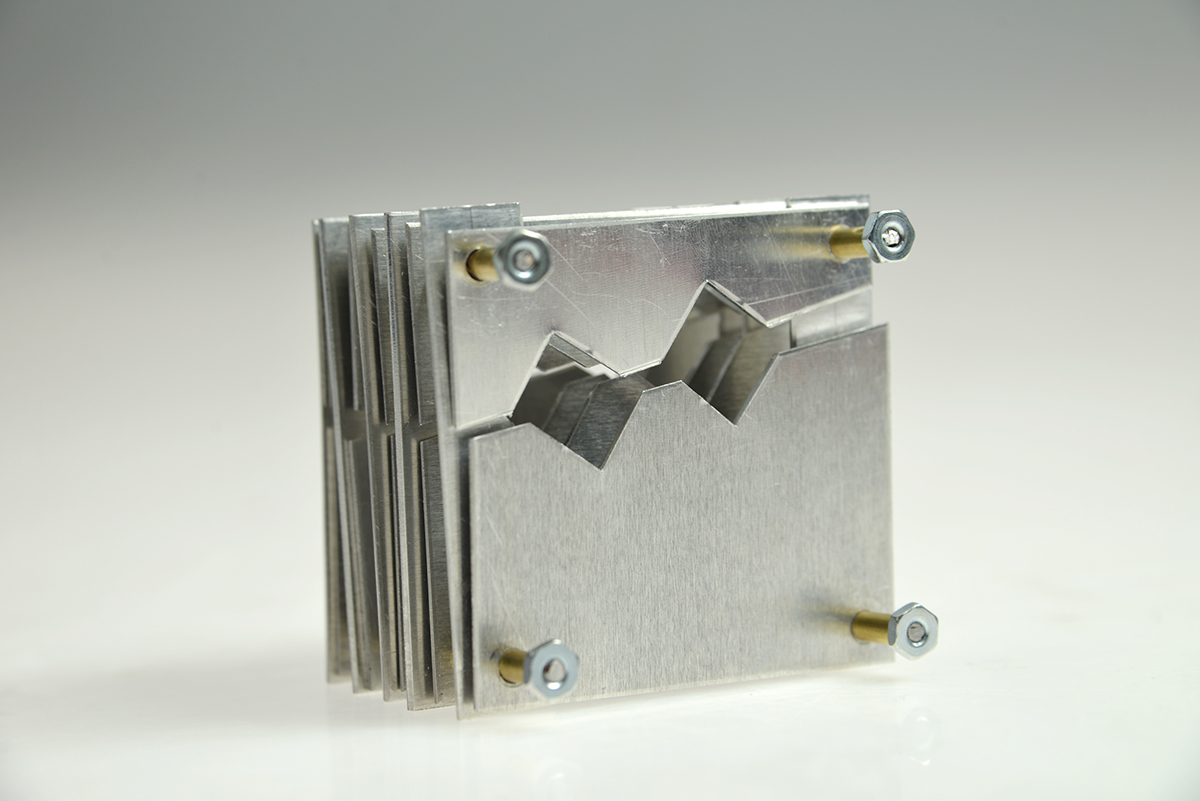Metals I, Fall 2015, Instructor: Peter Prip
Aluminum Plate Studies
A materials investigation in aluminum sheet stock.
Prompt | Timeline: 4 Weeks
Create a series of studies using aluminum as a material, using its constraints as a material to help inform and shape your ideas.
Process
Initially, I created a cube using six plates of aluminum and copper-coated steel jumprings. I punched large holes in each face using a circle punch, and used a hand punch to punch the corner holes. I rolled each aluminum piece on the slip roller in order to create a concave surface.
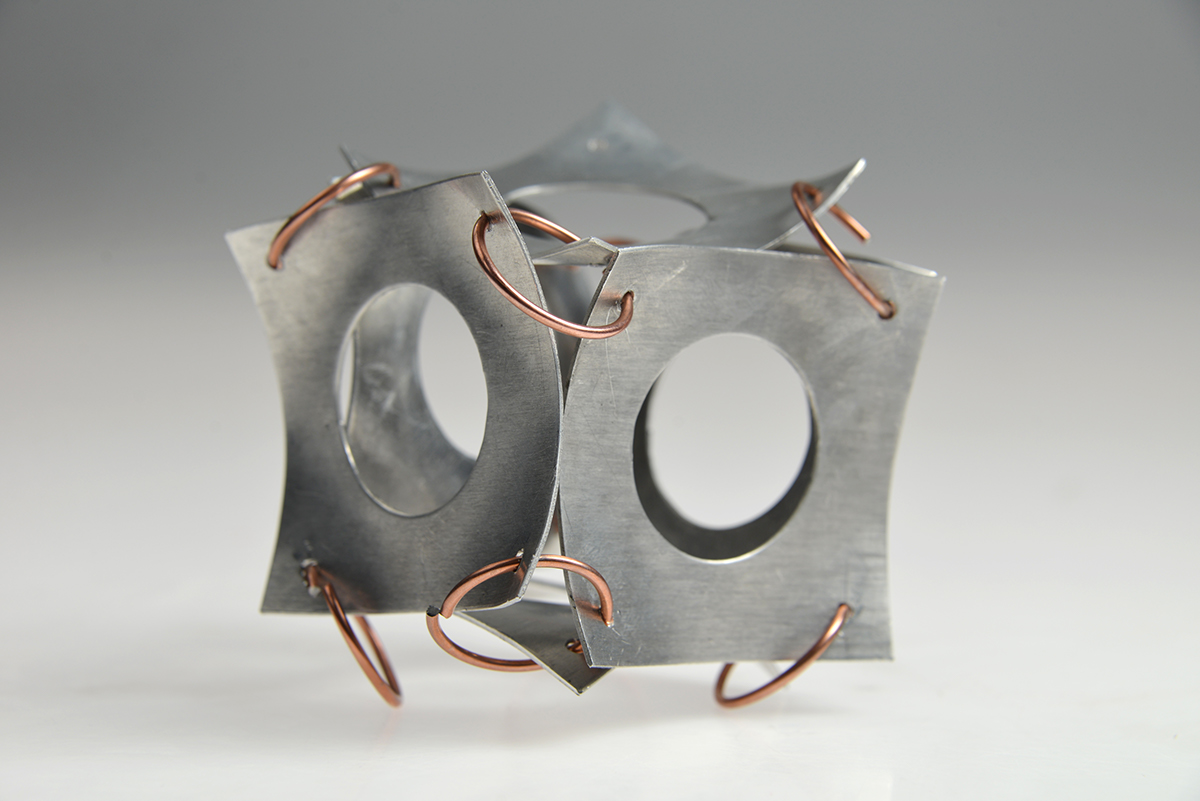
The second model that I created used the same machines as my first model, only I changed the scale of the plates and connections. Each center hole now connected to an adjacent plate using jumprings that went through the center of each hole.
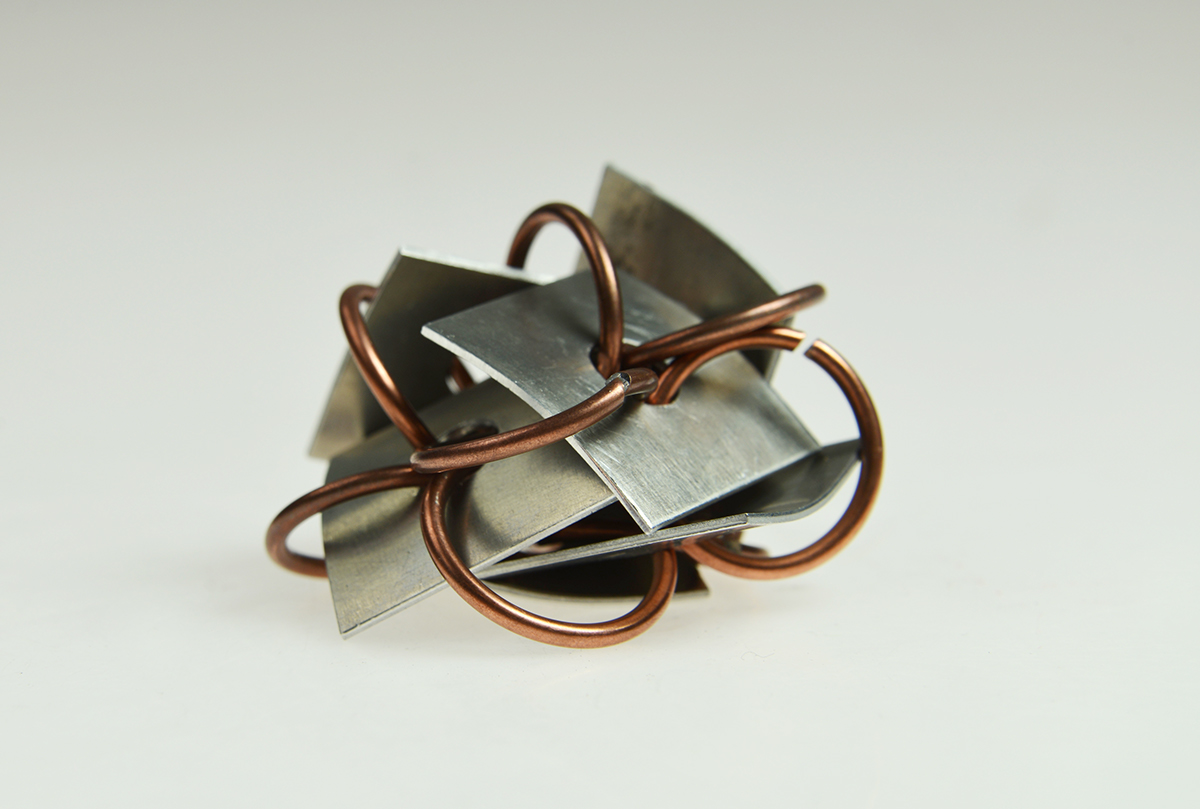
I made another study utilizing aluminum rivets. I was interested in investigating how repeating a pivoted module could create a form.


Another quick study I made was composed of two pieces that could snap together. These pieces were held by the material itself.
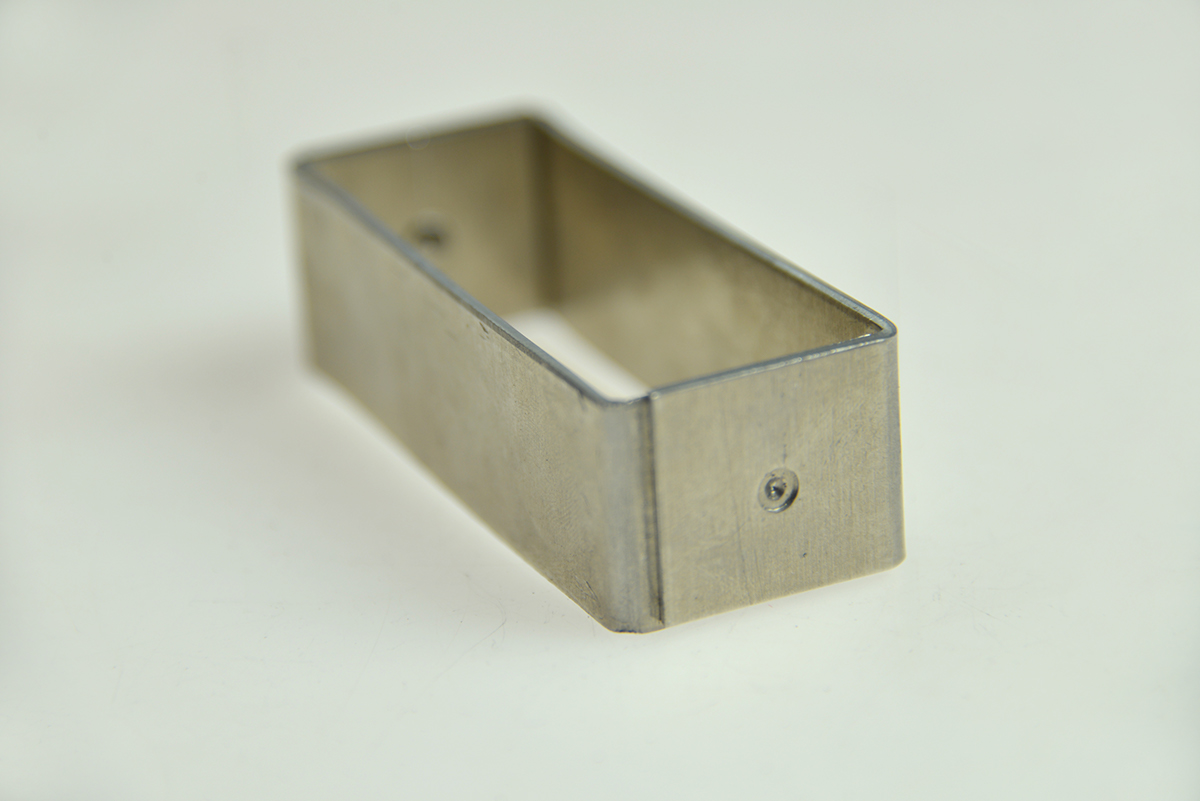
I then expanded that study into a form with more volume.
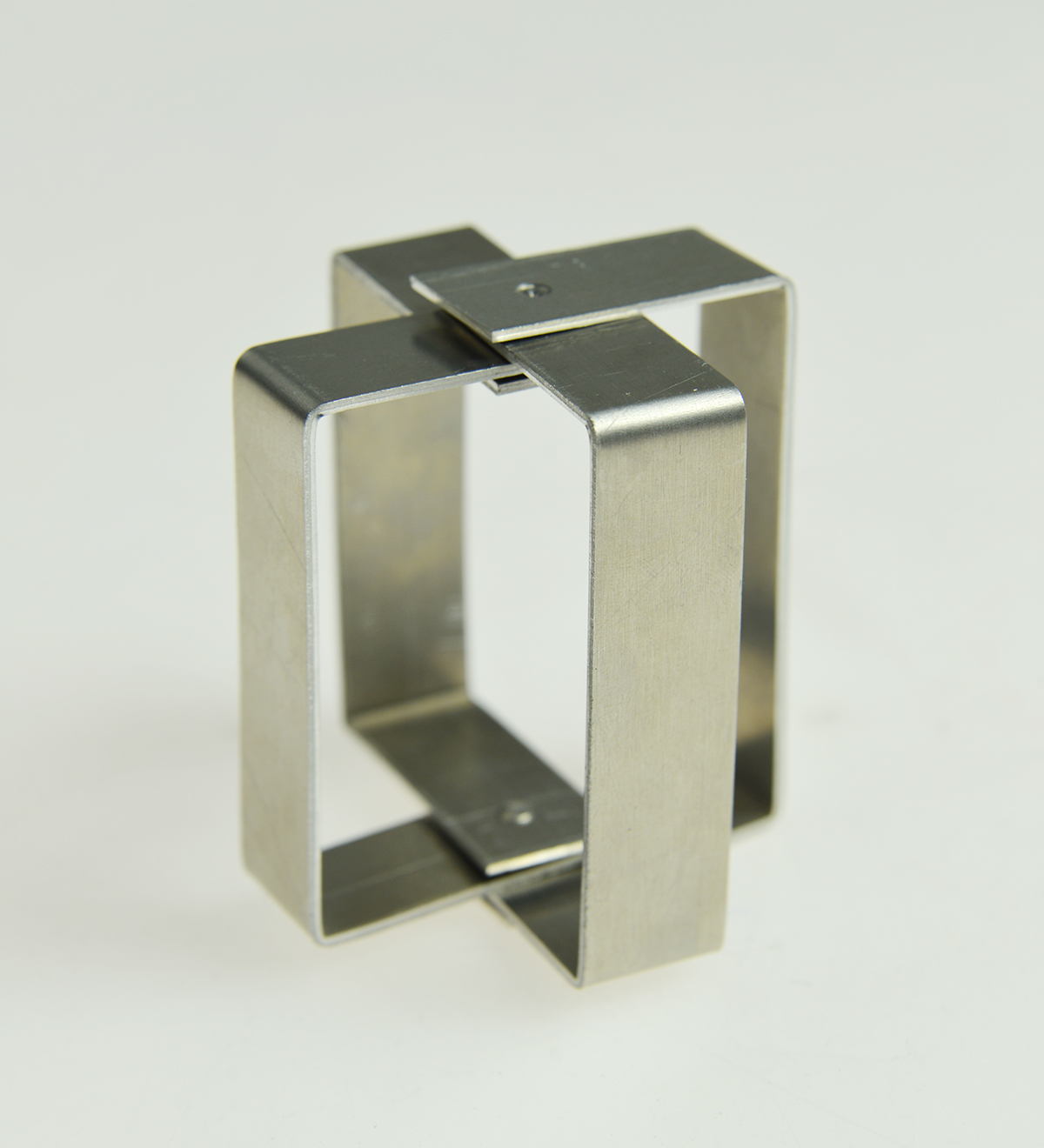
Interested in pivots and the ability to thread wire, I created a collapsible cube. I began to be interested in layering multiple plates on top of each other and seeing how the layers could interact with one another.



I started to investigate how the negative space of plates could create interesting shapes and movement of the material.


I decided to combine the two previous ideas into a cube with layers of aluminum of various widths. This cube was less functional than I intended, due to the friction of the plates.
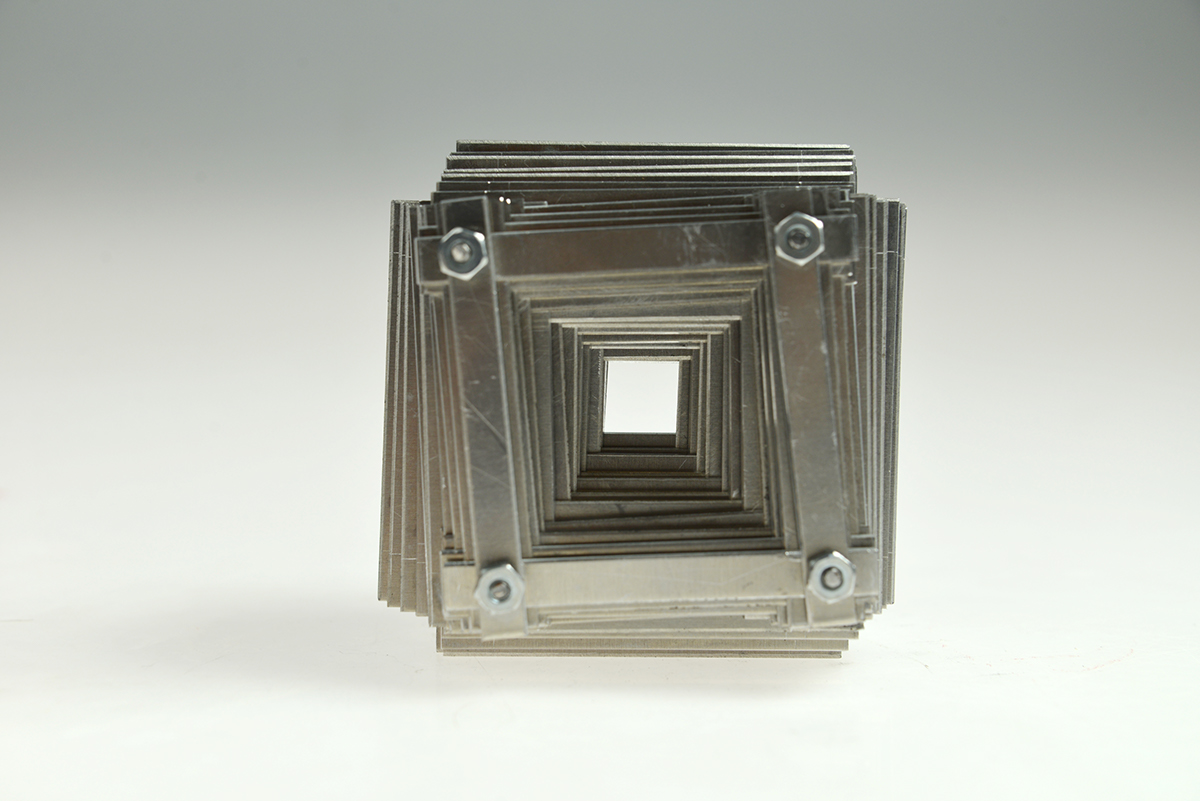

To improve upon my last model, I reduced the number of layers of the plates and added spacers between each layer of plates to help facilitate the movement.
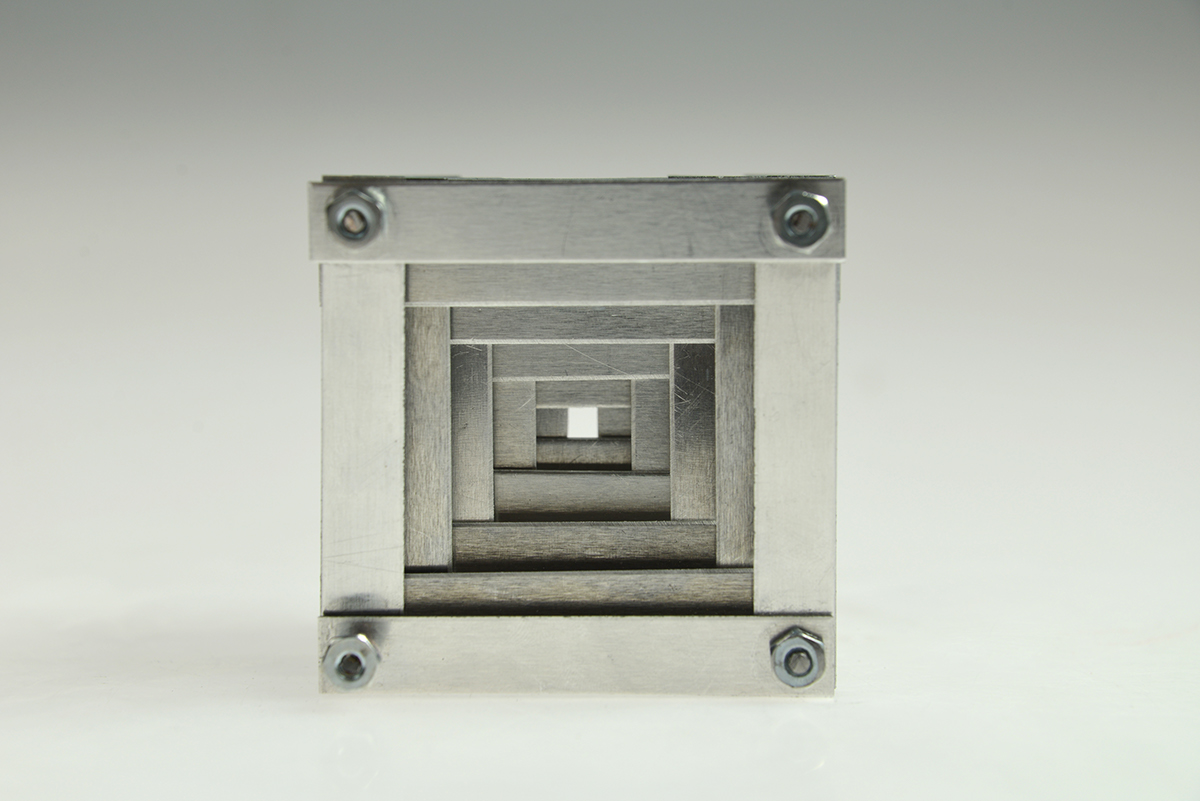
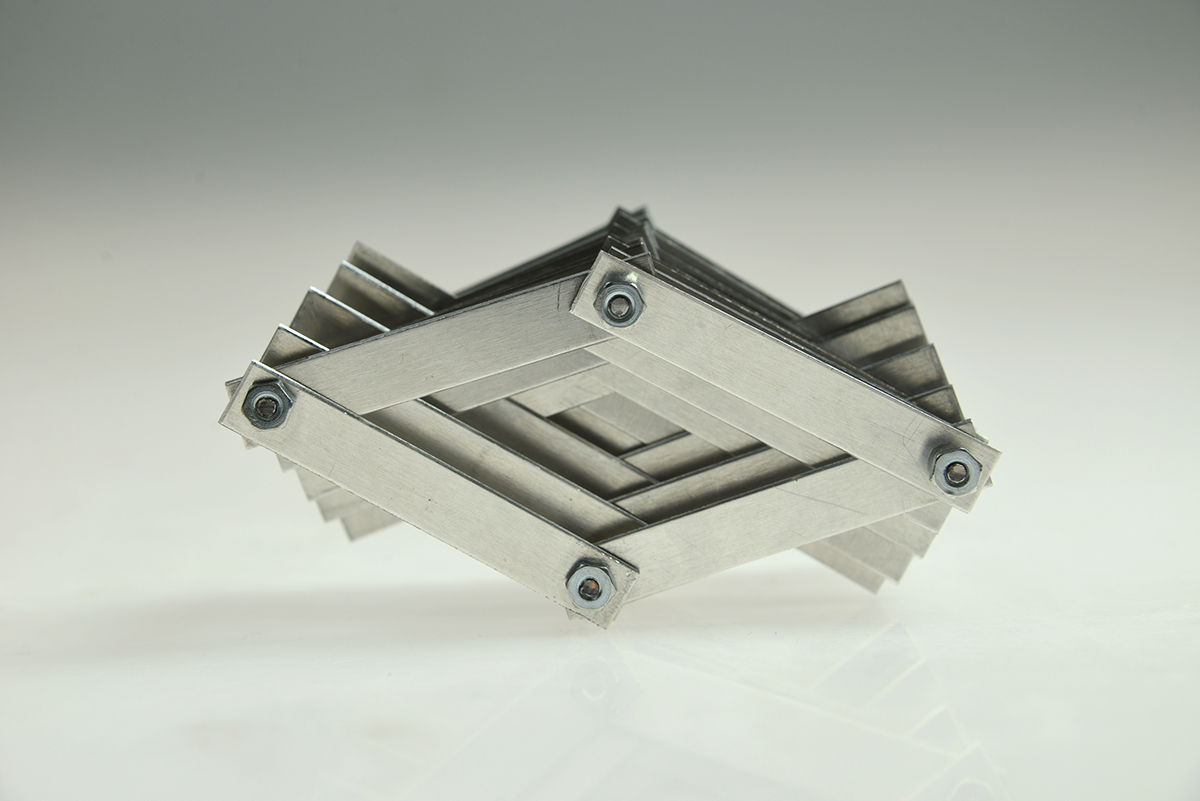
Next, I decided to experiment with having moving plates in a single direction. This stemmed from the observation that all plates on the same hinge plane would move in uniform.
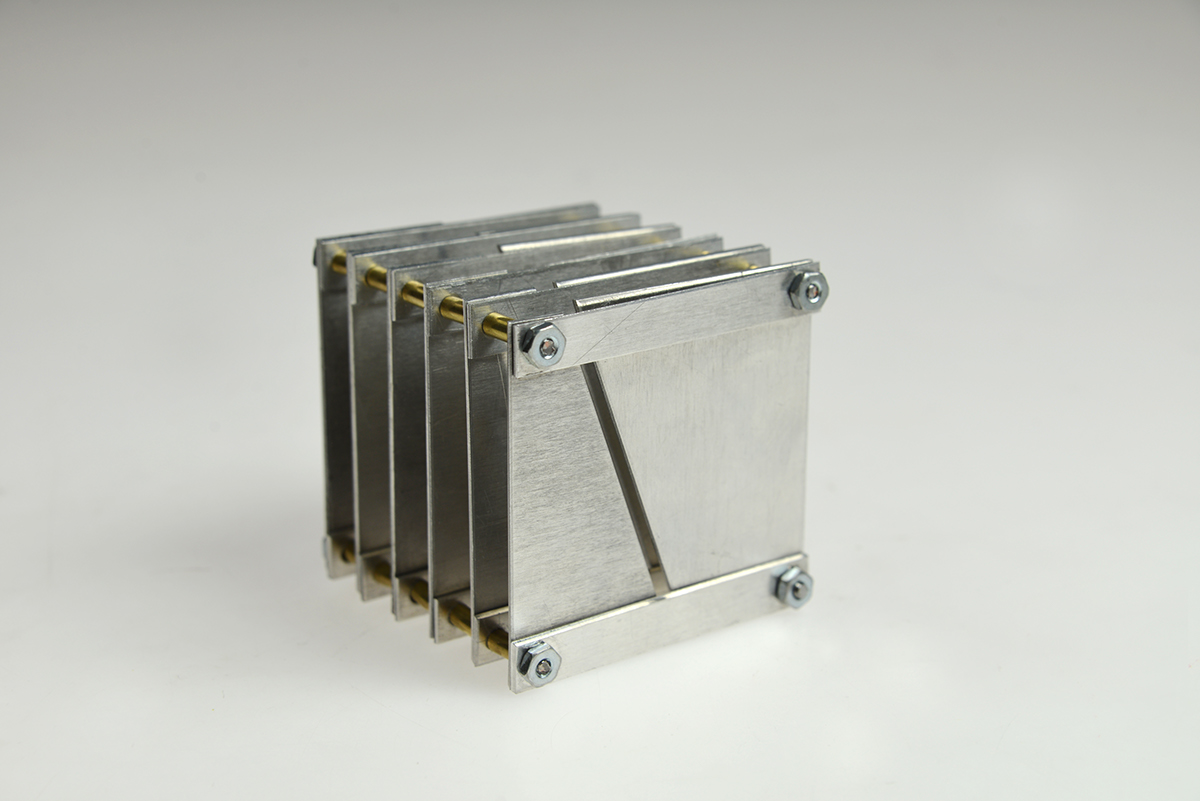




In my next cube study, I wanted to create negative shapes that would indicate the movement of the plates. Shifting the position of the plates allows for a diamond form to appear both in the resting and non-resting positions.


